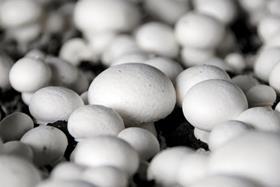
The FPJ Big 50 Products ranks the 50 best-selling fresh fruit and vegetable products by sales value, using Kantar Worldpanel data for the 52 w/e 20 May 2018.
06 Old Potatoes
Value: £500.5m (-0.4%) Volume: 798.7m kg (+2.4%)
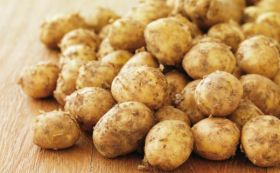
New hope for old potatoes as volume sales growth grow
There have been signs over the past year that recent declines in sales of old potatoes have bottomed out and there are the green shoots of a turnaround.
Concerted marketing efforts on behalf of the industry by the AHDB seem to be having an effect, with the multi-year campaign showing positive signs of reconnecting the public with the benefits and pleasures of eating potatoes. Indeed, there’s been a 3.7 per cent increase in the number of households buying fresh potatoes, according to Kantar.
“Volume sales of maincrop potatoes are strong year on year, driven by lower average prices and the cold, wet winter and spring,” explains Leon Mundey, marketing director at Greenvale, but he warns that in the coming months sales growth is likely to be stunted by the hot weather, which will move shoppers into new potatoes that are regarded as more compatible with salads.
For the long-term health of the category, further cheer comes from a 6.9 per cent increase in frozen potato sales in the past quarter [Kantar], with Albert Bartlett’s major investment in a frozen facility in 2015 – it is also opening a new plant for prepared potatoes in September – simply underlining a mood of cautious optimism.
07. Easy Peelers
Value: £484.1m (+2.1%) Volume: 242.8m kg (-0.5%)
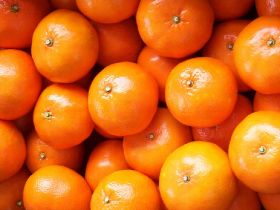
Easy peeler fans get the taste for premium
The citrus conglomerate of tangerines, satsumas and clementines had a good year despite tight supply in some varieties, with value increasing in the mature category thanks to price rises and customers buying more premium products.
Alastair West, category development manager for Capespan UK, says another factor in the price inflation “was due to a number of retailers reducing pack weights year on year, with the largest impacts occurring in Asda and Lidl”. He adds: “All retailers have basically aligned on pack weight sizes; previously Asda and Lidl were larger.” Sainsbury’s change in procurement strategy also had an effect on overall volume sales, which also dipped thanks to clementine and nardocott shortages.
This meant customers could have moved into higher-value citrus categories like tangerines, according to Matthew Embrey, senior commercial manager at MMUK, which “have been higher in price, averaging £2.56/kg versus clementines at £2”.
Embrey adds that these higher-tier varieties are now on shelves for greater stretches of the year. “There are now longer periods of the premium mandarin types – nardocott and tango – which are more expensive than clementines, which also contributes to the value growth,” he says.
08. Mushrooms
Value: £417.8 (+3.5%) Volume: 138.3m kg (+2%)
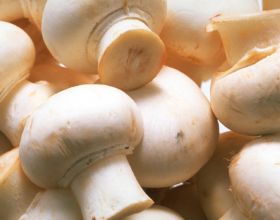
Politics threatens to derail strong mushroom sales
These are good times for mushroom sales, with a mature category posting encouraging value and volume increases. Convenient, healthy and simple to prepare, they tick many of the boxes for the modern consumer.
“We are very happy with the performance of mushrooms in the last year, which have considerably outperformed the overall vegetable market,” says Bord Bia’s Michal Slawski.
The Irish food board has funded a campaign called Mushrooms Complement Everything, aimed at highlighting mushrooms’ versatility to consumers in the UK and Ireland.
Household penetration is slightly up, and the category may also be benefiting from the trend for meat reduction, suggests Paul Parmenter, senior commercial manager at Walsh Mushrooms. Walsh is among a number of companies to have produced mushrooms with added vitamin D, giving the category further impetus.
Not everything is rosy, however. With less than 50 per cent of the UK’s mushroom requirements home produced, there are serious concerns over what could happen if there is a no-deal Brexit. As Parmenter points out, it’s not purely an issue for supply – with imports chiefly coming from Ireland, Poland and the Netherlands – but also in terms of farms buying in equipment and compost from the continent.
09. Blueberries
Value: £353.8 (+10%) Volume: 35.7m kg (+11%)
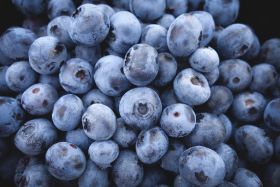
Blueberries continue impressive rise
The nation’s love of blueberries is showing no sign of reaching a plateau following double-digit growth in value and volume this year. Alongside other soft fruits, demand for the berry continues to be driven by their popularity at breakfast, dessert and as snacks, as well as key ingredients in blending and smoothies.
Nick Marston, chairman of British Summer Fruits, says last year’s weather gave a good platform for producers, after a slow year previously. “2017 was also a good season for growers in terms of a steady but decent volume of production, meaning fewer and smaller flushes and shortages than in some previous years.”
Jacqui Green, chief executive of Berry Gardens, says she predicts double-digit growth for the foreseeable future as British producers continue to invest in production suitable for Britain’s quirky climate. “We are working closely with suppliers including Driscoll’s and Fall Creek to ensure varieties best suited to our climate are planted, delivering the best flavour and shelf life.”
She suggests that British blueberries could eventually become more embedded in the British agricultural psyche. “Once consumers get used to seeing more British fruit on the shelves, we believe it will be as iconic as strawberries.”
10. Peppers
Value: £334.6m (+14.2%) Volume: 125.7m kg (+2.1%)
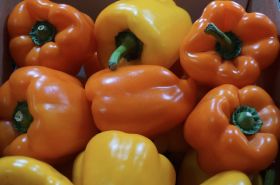
Further growth ahead as peppers prove popular
Sales of peppers have been booming thanks, in part, to the consumer-driven removal of green peppers from some traffic light packs and a fall in prices. But while the latter development appears to have encouraged more frequent purchases, Lee Stiles, secretary of the Lea Valley Growers’ Association, stresses that it has also had an adverse effect on growers’ margins.
This has prompted several exits from the sector over the last 12 months and only larger producers have been able to grow through continued investment. “At such an uncertain time regarding labour and pricing, the majority of growers have put investment on hold,” Stiles says.
When it comes to R&D, the main emphasis in bell peppers has been on increasing yield and piece size rather than improving quality or taste. In spite of this, Pleun van Malkenhorst of Rainbow Growers at Thanet Earth says opportunities for further category growth lie in a post-Brexit shift to greater self-sufficiency in salad vegetable production, as well as varietal innovation in speciality peppers.
One interesting development in Spain has been the trial of purple Sweet Bite by Ejidomar, with the producer organising in-store samples at supermarkets in the UK, Germany, Sweden, Denmark and Lithuania, as well as other countries in eastern Europe.



